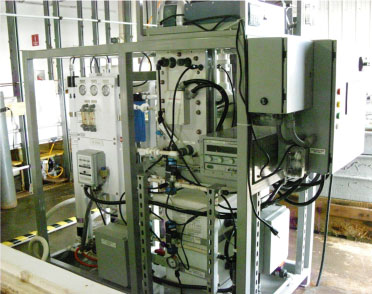
The United States Navy has revealed that its research laboratory is developing a technology that converts carbon dioxide in seawater and combines it with the hydrogen (seawater is hydrogen and oxygen with lots of dissolved salts and minerals) into jet fuel. The fuel that navy jets use is called JP-5. Producing it while at sea on an aircraft carrier eliminates the need to have tankers tag along for refueling purposes. Is the navy blowing smoke or can seawater turn into not only jet fuel, but fuel to put in your automobile?
What the Navy hasn’t revealed is how? And that brings us to the story of John Kanzius, a radio executive living in Erie, Pennsylvania, who sold his interest in his radio stations after contracting leukemia and dedicated himself to finding a way to use radio waves to cure his cancer. In 2009, 60 Minutes aired an interview with Kanzius who talked about his radio wave machine. Kanzius eventually died from the leukemia early in 2009 but his invention lives on, a technology that may be the inspiration behind the navy’s seawater to jet fuel research.

What Kanzius invented was a radio frequency generator or RFG. The idea was to inject gold nanoparticles into tumors and zap them with RFG radio waves. Curiously, the tumor cells including leukemia cells and not healthy cells attracted the gold nanoparticles. The result, in theory, and in petri dishes, was cancer cells dead, healthy cells unharmed.
During an RFG demonstration it was discovered that water vapour when exposed to radio waves would condense. This led to efforts to see if the RFG technology could separate the components of seawater. The hope was RFG could be used for desalinization. But a surprising side effect of RFG and seawater was ignition. You could burn seawater when exposed to RFG. That’s because seawater contains hydrogen and we know from the Hindenburg just how volatile hydrogen can be.
So is the navy using RFG to extract hydrogen from seawater? Well not necessarily. But the technology Kanzius developed has shown us the potential of seawater to energy conversion technology.
What the U.S. Navy Has Invented
The Naval Research Laboratory is using an electrochemical acidification cell (see image below) to take seawater through a two-step process to capture carbon dioxide and produce hydrogen gas. Carbon dioxide is concentrated in seawater at levels 140 times greater than in the atmosphere. A portion of it is carbonic acid and carbonate, but most is bicarbonate. Harvesting all that carbon coupled with the hydrogen is what the electrochemical acidification cell does employing a catalyst similar to that used to create synthetic oil from coal but with much greater efficiency.

Today the American navy operates 15 tankers carrying 13.6 billion liters (600 million gallons) of fuel to keep its fleet operational on the high seas. If the technology can produce JP-5 at between $1.25 and $1.50 per liter ($3 to $6 per gallon) it would reduce the logistical support requirements and environmental impact of operations dramatically.
Could we see more than jet fuel coming from this technology? Will we, in the future, convert seawater into gasoline and diesel? At current gas pump prices, $1.30 a liter here in Canada, seawater is starting to sound cost competitive with oil pumped out of the ground.








